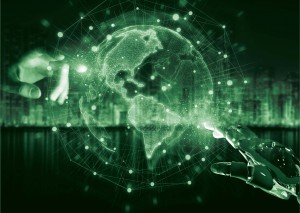Transition to Sustainable Economy
Every time a crisis unfolds, the hopeful among us point to the possibility that in every crisis exists an opportunity. Covid-19 has been no exception. Even those who like to see the glass half-full are already pointing to significant improvement in air pollution metrics in the wake of the lockdowns. Others are happy to flag signs of gradual replacement of individualistic consumerist lifestyle with healthy, sustainable, community-based alternatives, in some privileged neighbourhoods. We are told a new dawn may emerge if all of us collaborate to carve a new sustainable future for humanity, as the virus forces us to pause and think while the climate improves as a result of lower economic and social activities.
To be fair, some developments may be read as green shoots of hope—both elsewhere in the world, and in Pakistan. The European Commission, for instance, is toying with a plan called Next Generation EU, centred on the European Green Deal aimed at sustainable growth post Covid-19. The EU is expected to invest up to USD 825 billion into the Covid recovery fund, pegged to green conditions aimed at supporting Europe’s pursuit of sustainable logistics, development of sustainable materials for consumer goods, finding alternatives to plastic packaging, exploring the benefits of national circular economies and so forth.
The EU is also using Covid-19 to speed up the process of sourcing locally or regionally, a trend that began a few years ago. For example, in 2017 Adidas set up its ‘speed factories’ in Germany and Atlanta—not Asia—to provide ‘next-hour’ delivery for customised products. In an October 2018 survey, about a quarter of apparel-sourcing executives in the developed West told McKinsey & Company that more than half of the clothes they will source in 2025 will come from ‘near-shoring’.
The transition of sourcing from low-labour-cost countries to ‘near-shoring’ countries that offer smart factories, automation, artificial intelligence, skilled labour and customer proximity, may originally be motivated by corporate profitability. But the trend is expected to gather pace to reduce carbon footprint of long-distance sourcing of raw materials and finished goods.
Meanwhile, Paris is trying to roll out a 15-minute city concept under which work, amenities and residence would ideally be located within a 15-minute radius. The move is towards reducing carbon emissions. This echoes the growing trend toward work-from-home models being explored by corporations. And if Melbourne has promised to deliver 44-kilometres of cycling lanes in 2021—seven years ahead of planning because of Covid-19—then Milan has pledged to turn over 35 kms of streets to pedestrians and cyclists.
These commitments reflect an increasing urban consciousness where a network of 40 global cities-C40-have united to launch the Global Mayors Covid-19 Recovery Task Force to rebuild their cities and economies in a way that improves public health, reduces inequality and addresses the climate crisis. While the initiative for sustainability has mostly been signed by developed countries, cities from some emerging and developing economies, such as Argentina, Mexico, Republic of Korea, and Philippines, are also a part. To what degree C40 Mayors can really shepherd national economies and societies to meet 1.5-degree pathway, is another matter These global developments beg the question: what is Pakistan doing to use Covid-19 as an opportunity to transition to a sustainable way of doing business and to create a sustainable economy. It is difficult to prove the absence of something. The mere absence of discussion on a subject also does not always prove absence. But eventually any argument to prove absence must largely stem from silence. And silence is exactly what exists insofar as the answer to the question on Pakistan is concerned.
Work-from-home models are not only being explored by corporations outside Pakistan. Pakistani companies, too, are thinking about new ways of working. Discussions with Pakistan’s corporate leaders suggest that at least two Pakistani conglomerates are exploring satellite offices, co-working spaces, and work-from-home options to permanently reduce staff presence at their corporate headquarters by up to 60 percent. These groups do not like to be named because they have various options under consideration at the time of writing this piece. But if this trend catches up in Pakistan, it may have some positive spill-over by way of reductions in transport-driven carbon footprint.
An electric vehicle (EV) policy has been rolled out by the government in the light of the fact that global road transportation (passenger cars and trucks, buses and two- and three-wheeled vehicles) accounts for 15 percent of the carbon dioxide emitted each year. But in a country that still faces power outages, the success of EV is uncertain at best. And even if it is successful, it is feared to come at a huge environmental cost considering that in nearly all of its proposed scenarios, the latest Indicative Generation Capacity Expansion Plan 2047 prepared by the National Transmission and Dispatch Company proposes coal-based generation to have more say in the dependable base load than hydropower in the longer run. It is also true that some of the Covid-19 related financing facilities offered by the State Bank of Pakistan may be channelled to investments in some environmentally sustainable ventures, such as cold storage facilities, and supply chains that help reduce agricultural losses. But are
those Covid-19 financing facilities pegged to environment sustainability?
The answer is ‘no’. In 2017, the central bank had issued Green Banking Guidelines. But its adoption is voluntary in nature. And sans one-off exceptions, one is hard pressed to find great examples of those guidelines being followed by the banking community, nor is there a discourse on the subject.
Also missing from government action in Pakistan are concerted efforts towards energy efficiency, solar power production, urban farming, green manufacturing practices, and other measures aimed towards a sustainable economy post-Covid. Au contraire, the government is exploring ways to boost livestock industry to be able to export value-added dairy and meat products. Pakistan already boasts one of the biggest cattle flocks in the world. Trying to further develop livestock industry at a time when world’s leading livestock countries are investing in research and development to explore lab- grown meat and plant-based meat may not be wrong per se (given Pakistan’s economic compulsions). But the fact is that cattle and other livestock account for about 15 percent of global anthropogenic greenhouse gas emissions.
Perhaps the focus on sustainability is seen as a luxury or a rich man’s values those whose bellies are filled with fillet and caviar. Little else explains the silence in public as well as the private sector. In the case of the latter, it is too early to say how and to which extent Pakistan’s private sector is taking Covid-19 as an opportunity to transition towards sustainability. For many corporations, by the time their management dealt with the initial shock of the virus and the ensuing lockdown, they had to begin preparing for their financial year ends (June)—a time period in corporate calendar when boutique ventures, which is how environmental affairs are seen as, take a pause.
It may be so that corporations will announce some measures towards greener sustainable ways of doing business after the upcoming board meeting season. But so far, they have largely been silent on these affairs. No wave of commitments or pledges towards sustainability or even indications thereof have been announced by the corporate sector; tax cuts and subsidies have dominated the discourse instead. In fact, some corporations-and there is no point naming or shaming-have either halted or decreased their CSR spending on projects aligned with the UN’s Sustainable Development Goals. Not that CSR funds are huge (in relation to the amount needed to be spent towards environment sustainability), but the drop in spending reflects corporate priorities, which, in turn, may well be read as a spitting image of the priorities of their consumers and the society at large.
On the whole, the Pakistani consumer is not aware of climate change and sustainability concerns; an October 2019 national poll by Gallup Pakistan reported that less than half of Pakistanis claim to know about climate change, of which only a third knew a great deal about it and the rest can only be said to have heard about it.
Anecdotal evidence suggests that even those who are aware still choose to ignore it, perhaps because of sheer force of habit or because herd behaviour has not changed yet. The absence of a constituency for climate change is also visible by media silence on these concerns. Sustainability does not make it to political talk shows, whereas business chambers and associations have not made it a part of their core advocacy or lobbying agenda.
Perhaps the biggest positive development on climate change comes from the government. The federal government’s 10-billion tree plantation drive initially kick-started as the billion tree tsunami campaign by Khyber Pakhtunkhwa province in 2014, has been given a new impetus during Covid-19 as an instrument of sustainable job creation under a Green Stimulus plan for Covid. That plan also envisages to develop at least fifteen national parks across the country in the first phase. But these pretty much define the limits of serious efforts made towards achieving sustainability.
What seems to be missing from the collective action of public and private sector stakeholders in Pakistan, and to a degree in many countries outside Pakistan, is the understanding that sustainability is not an accident. That if Covid-19 has had a positive impact on some metrics of environment, it does not mean sustainability. Sustainability must be a well-intended move, one that is democratic in its disposition.
The pathway to 1.5 degrees is technically achievable. But the numbers behind it demand a change of Himalayan proportions. All the billion-tree tsunamis, CSR campaigns, cycling paths in Milan, C40 Mayors’ commitments, and other efforts combined are exciting green shoots. They may be helpful in generating debate and creating awareness. But, on its own, they do not really move the needle towards the 1.5-degree pathway.
Unless Pakistan and other countries put environmental concerns and circular economy at the heart of their growth strategies, sustainability measures taken at the periphery may well just be feel-good measures and good public relations. Changing the mindset to put environment at the heart of growth, therefore, is one of the biggest challenges all over the world, and especially in Pakistan-a country whose policy influencing corridors are dominated by conventional macroeconomic thinkers.
Equally challenging is to convince the state and society alike that while technology is part of the solution, it is not the panacea, given the rebound effect of technology and the gale of conspicuous consumption. Covid-19 presents the opportunity and hope to address these challenges, but neither should be construed as a strategy. Environmental sustainability and mitigation of environmental, economic and social losses from climate change isn’t yet a defining political question in Pakistan, a rather unfortunate reality for a country assessed to be one of the most vulnerable to climate change. When it becomes a defining political question, that’s when hope could truly be had.
Courtesy: UNDP’s Development Advocate Pakistan
 Jahangir's World Times First Comprehensive Magazine for students/teachers of competitive exams and general readers as well.
Jahangir's World Times First Comprehensive Magazine for students/teachers of competitive exams and general readers as well.



